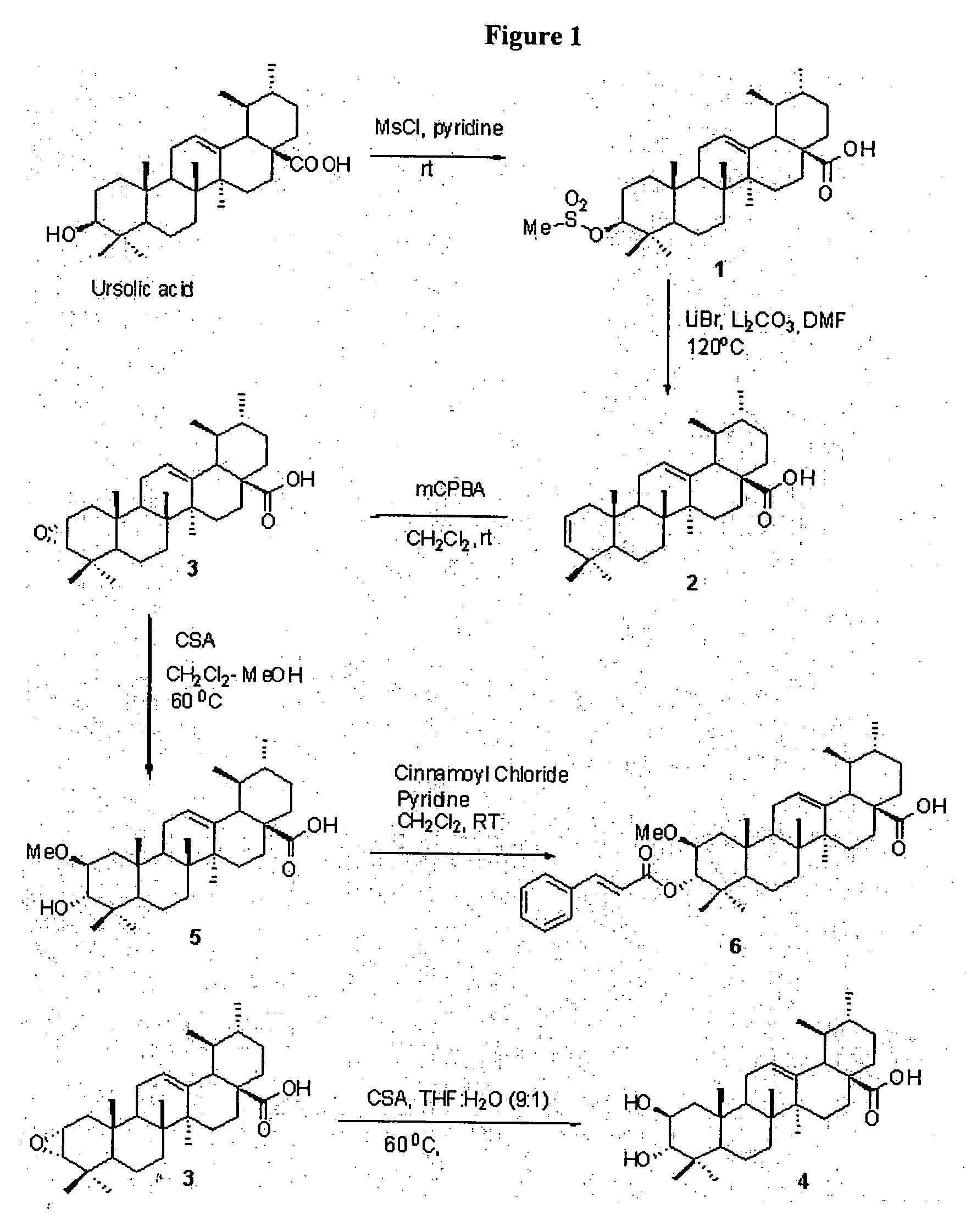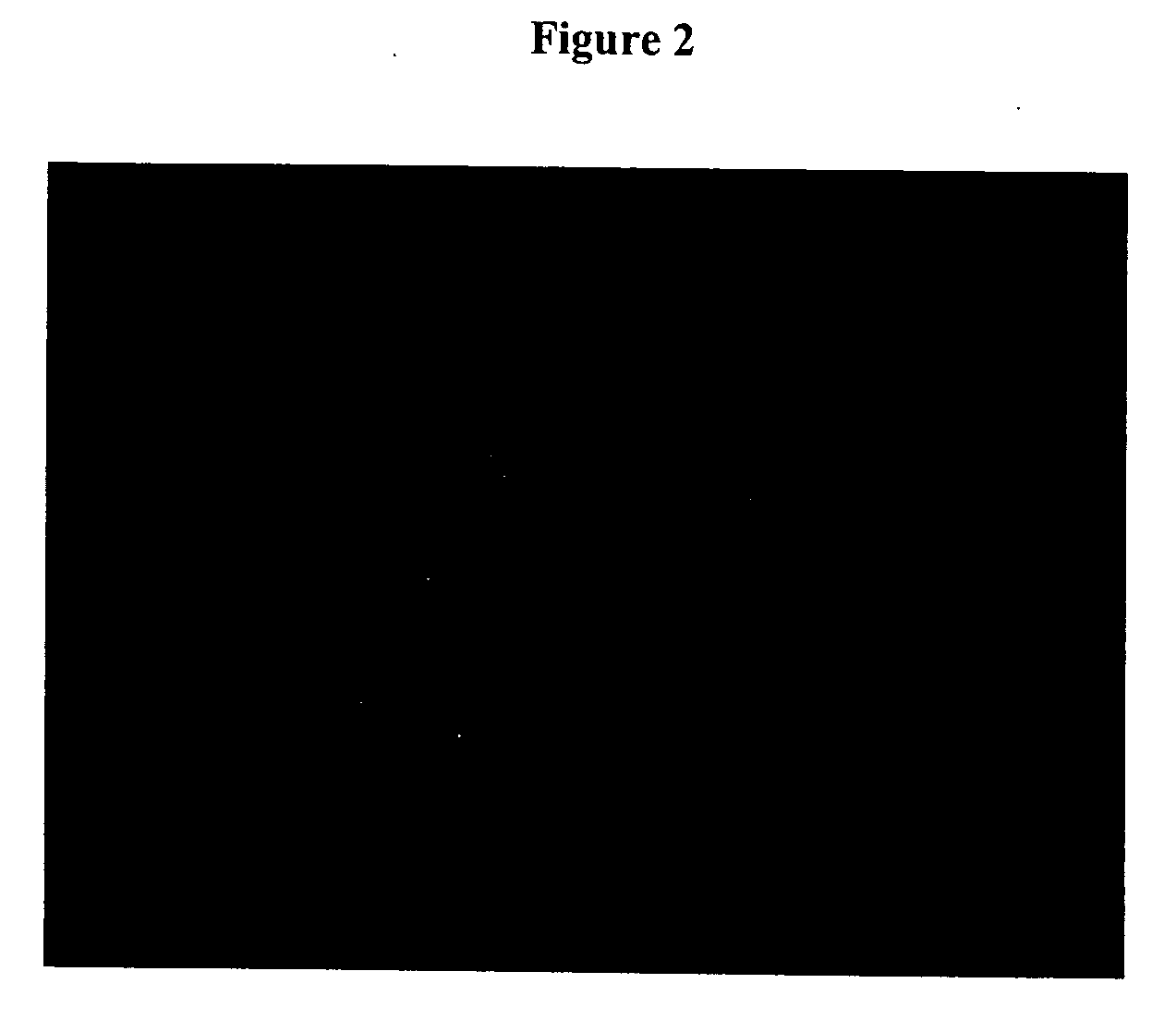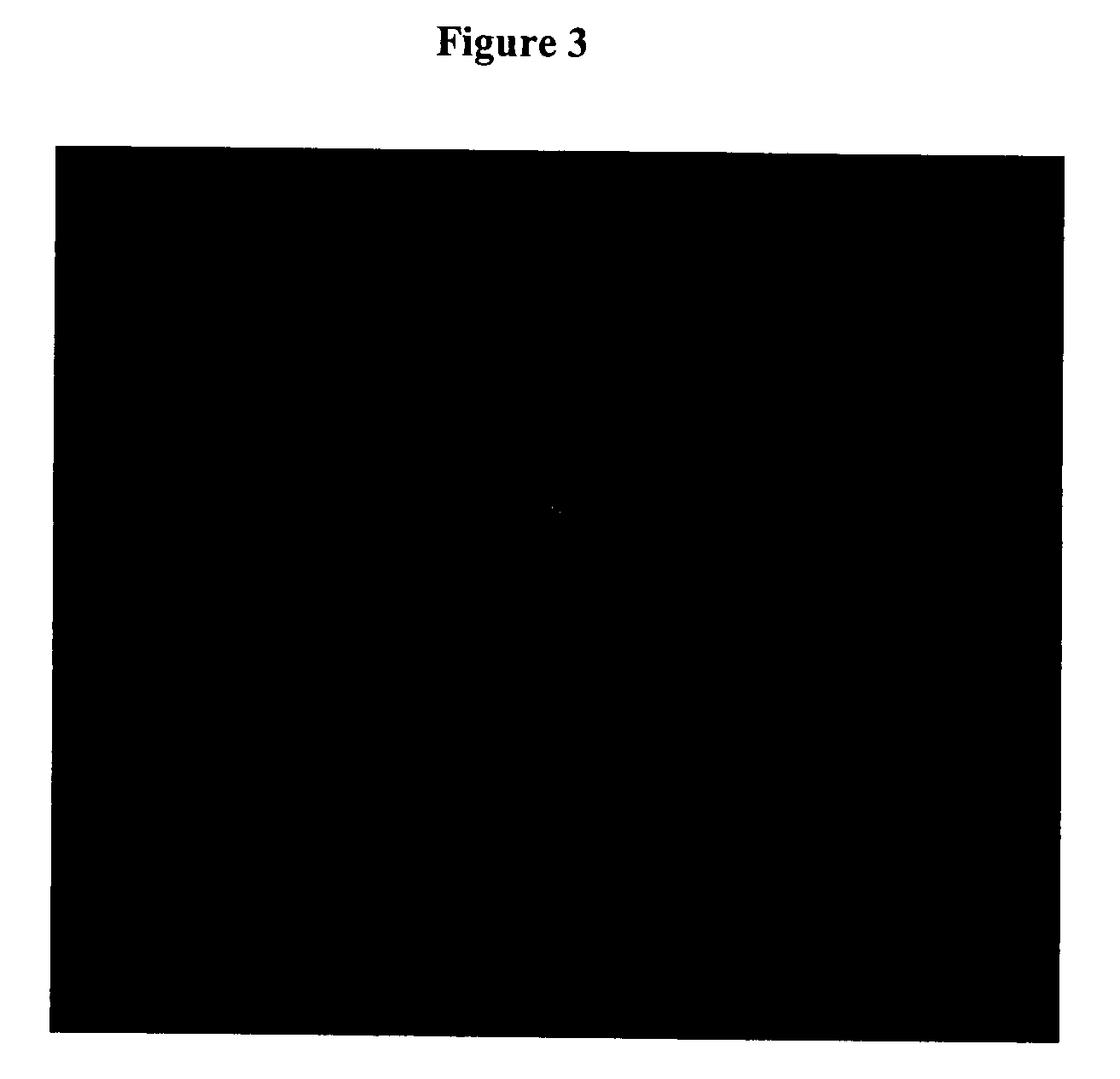Control of biofilm formation
a biofilm and biofilm inhibitor technology, applied in the field of control of biofilm formation, can solve the problems of biofilm inhibitors, serious threats to human health, serious medical problems, biofilm invasions, etc., and achieve the effect of reducing or preventing the invasion of a bacterium
- Summary
- Abstract
- Description
- Claims
- Application Information
AI Technical Summary
Benefits of technology
Problems solved by technology
Method used
Image
Examples
example 1
[0069] Biofilm Formation of Asiatic acid, Corosolic acid, and Madecassic Acid against Escherichia coli Clinical Strain UTI89 and Laboratory Strain JM109.
[0070] Biofilm inhibition experiments were conducted using an assay adapted from the reported protocol described in Pratt and Kolter, 1998, Molecular Microbiology, 30: 285-293; Li et al., 2001, J. Bacteriol., 183: 897-908. E. coli clinical strain UTI89 was grown in LB in 96 well plates at room temperature for one or two days without shaking. E. coli laboratory strain JM109 was grown in LB plus 0.2% glucose in 96 well plates at room temperature for one day without shaking. To quantify the biofilm mass, the suspension culture was poured out and the biofilm was washed three times with water. The biofilm was stained with 0.1% crystal violet for 20 minutes. The plates were then washed three times with water. OD reading at 540 nm was measured to quantify the biofilm mass at the bottom of the wells. Then 95% ethanol was added to dissolve ...
example 2
[0072] Biofilm Formation in a cysB Deletion Mutant of E. coli Clinical Strain UTI89
[0073] An isogenic cysB deletion mutant was prepared from E. coli clinical strain UTI89. Briefly, the construction of a cysB deletion strain was prepared as follows: the red-recombinase method was utilized (Murphy, K. C., and K. G. Campellone. 2003. Lambda Red-mediated recombinogenic engineering of enterohemorrhagic and enteropathogenic E. coli. BMC Mol Biol 4:11). Using the template pKD4, a linear knockout product was generated using PCR and the primers 5′-ACGATGTTCTGATGGCGTCTAAGTGGATGGTTTAACATGAAATTACAACAAC TTCGGTGTAGGCTGGAGCTGCTTC-3′ and 5′-TCCGGCACCTTCGCTACATAAA AGGTG CCGAAAATAACGCAAGAAATTATTTTTCATGGGAATTAGC CATGGTCC-3′. The product was electroporated into red-recombinase expressing UTI89. The resultant strain had a complete deletion of the cysB coding sequence replaced by a kanamycin cassette. The resistance marker was secondarily excised from the chromosome by transformation with pCP20 expressi...
example 3
[0076] Antibacterial Effect of Asiatic Acid on Haemophilus influenzae (ATCC 10211), E. coli (ATCC 25922), and P. aeruginosa (ATCC 27853).
[0077] Using the appropriate NCCLS procedures, the antibacterial effect of asiatic acid on Haemophilus influenzae (ATCC 10211), E. coli (ATCC 25922), and P. aeruginosa (ATCC 27853) was studied at 64 μg / mL. Asiatic acid had no inhibitory effect represented by a MIC (minimal inhibitory concentration) of greater than 64 μg / ml. These results along with the results described in Example 2, further supports that asiatic acid is not an antibacterial compound.
PUM
| Property | Measurement | Unit |
|---|---|---|
| minimal inhibitory concentration | aaaaa | aaaaa |
| diameter | aaaaa | aaaaa |
| flow rate | aaaaa | aaaaa |
Abstract
Description
Claims
Application Information
 Login to View More
Login to View More - R&D
- Intellectual Property
- Life Sciences
- Materials
- Tech Scout
- Unparalleled Data Quality
- Higher Quality Content
- 60% Fewer Hallucinations
Browse by: Latest US Patents, China's latest patents, Technical Efficacy Thesaurus, Application Domain, Technology Topic, Popular Technical Reports.
© 2025 PatSnap. All rights reserved.Legal|Privacy policy|Modern Slavery Act Transparency Statement|Sitemap|About US| Contact US: help@patsnap.com



